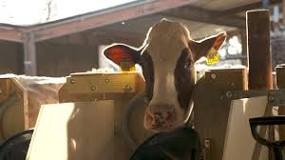Rich One
Registered
- Joined
- Jul 17, 2012
- Messages
- 10,297
- Likes
- 6,860
Surprising, Cow burps not mentioned ?
What percentage of methane emissions are cattle?

Globally, cows and other livestock animals are responsible for about 40 percent of methane emissions – a potent greenhouse gas. In digesting their high fiber diet, cows emit methane as a byproduct, making them one of the least climate friendly sources of food on the planet.Mar 6, 2022
What percentage of methane emissions are cattle?
Globally, cows and other livestock animals are responsible for about 40 percent of methane emissions – a potent greenhouse gas. In digesting their high fiber diet, cows emit methane as a byproduct, making them one of the least climate friendly sources of food on the planet.Mar 6, 2022

